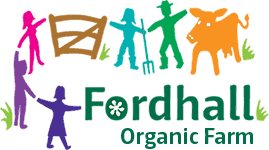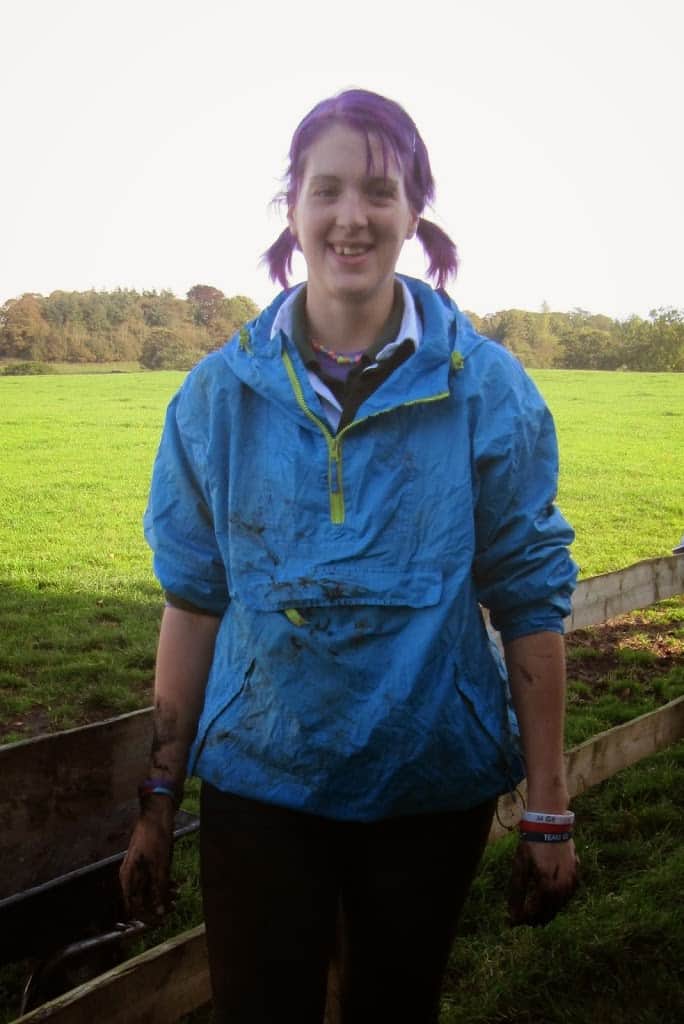 |
| Volunteer Naomi |
The day started very early for some, and the couple that had the least distance to travel (just up from the yurts) were the last to arrive… not mentioning any names!
We had a quick brief from Paul Rutter (expert twitcher) on what bird species we were likely to see and hear on the walk, then wrapped up warm and set off. Even standing in the car park for a few minutes while Charlotte locked up we started to hear robins and blackbirds in the trees by the farmhouse, so I knew this was going to be an exciting morning.
We started by walking across the Cottage Field, listening in the hedgerows for sounds of bird-life; we heard several wren with their loud fast warbling and trilling, chaffinches’ descending staccato series ending with a loud flourish and great tits’ ‘teacher teacher’ – Charlotte hopes it will be the new call she will remember for this year!
The route we took went through the Mill Meadow into the woodland and past the bird hide and Forest school area, motte and bailey site and out into the Broad Meadow starting with the South West side and up past the pond and into the House field.
We learned the difference in calls between collared dove, stock dove and wood-pigeon, and the breeding behaviours of these three birds. The walk through Mill Meadow picked up more wren, great tit and other birds including robin, chiffchaff; an easy song to remember as it says its name; ‘chiff-chaff-chiff-chaff’ and rook; which nest as close as just one wingspan away from its neighbour. Further along before the bird hide at the edge of forest school area we also saw briefly and heard the rambling chattering and high, sweet whistled notes of a male blackcap in the hedgerow.
We paused to listen to the birds outside the hide and Paul showed photos of the birds we might see from the hide or around the woodland, as well as something we would definitely see later, the linnet. In the forest school area and through the woodland we continued to hear bird songs including the soft, slow, simple notes of a reed bunting, familiar tones of the great tit, high pitched trill of the blue tit and trident descending warble of the tree-creeper.
As we moved out into the Broad Meadow some young cattle joined us (which terrified Paul somewhat), and we even got a few wet nose marks on our jackets as they became quite daring, I even managed to stroke a nose or two!
 |
| Inquisitive calves |
At the bottom of this field a male linnet was spotted on the top of a gorse bush by the river, binoculars were passed round the group so that everyone could see what beautiful birds they are in breeding plumage. At the same time, a skein of Canada geese flew over, I recognised their call from previous dawn goose counts.
 |
| Paul Rutter pointing out the linnet on the gorse bush |
As we started to walk through the Broad Meadow the sunrise was impressive. The birds continued to demonstrate how loudly they could sing to defend their territory, with dunnock, skylark, and both mistle and song thrush singing out loud and clear.
As we passed the pond we saw the sweetest sight, mallard ducklings venturing out of the shade and across the pond, followed by the female a few moments later. Just then a flock of greylag geese flew over the river and landed in a field opposite.
We left the cattle behind as we ventured back up the House Field to Arthur’s Farm Kitchen for breakfast, we were greeted by a skylark singing while corkscrewing up into the air, goldfinch on the path to the wildlife garden, swallow sitting on the overhead wires and flying around catching early insects, dunnock and house sparrow in the car park and a buzzard circling over the farm.
A good walk all round with lots of new bird songs heard, now the trick is to remember what I have learnt and pass it onto other people!
http://www.fordhallfarm.com




